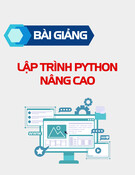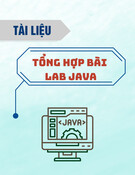
http://www.iaeme.com/IJMET/index.asp 1464 editor@iaeme.com
International Journal of Mechanical Engineering and Technology (IJMET)
Volume 10, Issue 03, March 2019, pp. 1464–1474, Article ID: IJMET_10_03_148
Available online at http://www.iaeme.com/ijmet/issues.asp?JType=IJMET&VType=10&IType=3
ISSN Print: 0976-6340 and ISSN Online: 0976-6359
© IAEME Publication Scopus Indexed
EVALUATION OF THE IMPLEMENTATION
PROCESS AND SUPPORT ON THE VESTYNA
APPLICATION
Sucita Diayu Niranda Yani, Ahmad Nurul Fajar
Information Systems Management Department, BINUS Graduate Program-Master of
Information Systems Management, Bina Nusantara University Jakarta, Indonesia 11480
ABSTRACT
IT evaluation, especially the vestyna application, must be implemented properly so
that it has an impact on the company's achievement. The purpose of this study is to
evaluate the implementation process and support for the vestyna application at PT XYZ.
Measurements are made using the COBIT 5 framework with the Process Assessment
Model (PAM) method. From the measurement results it can be seen that most of the
capability levels of the vestyna application evaluation processes at PT XYZ is at level 1
(performed). The target that the company wants against the level of capability of these
processes is at level 3 (established). Therefore, a recommendation is made to improve
these processes by referring to the best practices suggested by COBIT 5. The main
recommendations include regular communication between vestee computers and
partners to convey the values of each existing project, making a Standard Operating
Procedure (SOP) for the entire project from the type of project to revenue calculation,
periodic monitoring and reporting as well as documenting all activities related to the
application of the vesty to written and oral documents
Key words: IT Evaluation, PT. XYZ, Framework COBIT 5, Process Assessment Model
(PAM)
Cite this Article: Sucita Diayu Niranda Yani, Ahmad Nurul Fajar, Evaluation of the
Implementation Process and Support on the Vestyna Application, International
Journal of Mechanical Engineering and Technology 10(3), 2019, pp. 1464–1474.
http://www.iaeme.com/IJMET/issues.asp?JType=IJMET&VType=10&IType=3
1. INTRODUCTION
Rapid development leads to increased risk in developing innovation. A dynamic business
environment poses challenges for companies to adapt to maintain competitive advantage. The
determinant of competitive advantage for companies and organizations is how the company
runs the IT process in supporting its business. However, IT processes carried out by companies
are often not optimal. This can be due to the lack of governance and management of IT in the
company. PT XYZ is an information and communication company and a complete
telecommunications service and network provider in Indonesia. PT. XYZ claims to be the
largest telecommunications company in Indonesia. In an effort to transform into digital

Sucita Diayu Niranda Yani, Ahmad Nurul Fajar
http://www.iaeme.com/IJMET/index.asp 1465 editor@iaeme.com
telecommunication company, PT. XYZ implements business strategies and operations that are
customer-oriented. One portal that supports the continuity of its infrastructure is the In-vestment
Feasibity Analysis (Vestyna) application. Vestyna is an application based on the
standardization of management of Investment Feasibility Analysis of projects that have been
submitted by each Optima division retailer at PT XYZ. This application act as a place to report
on project work that will be done by partners of PT. XYZ. One of the main business processes
of PT. XYZ in the Optima division in the form of infrastructure development. With the growing
development of internet users, wifi and various other products at PT. XYZ, business processes
both implementation and support processes in the Optima division of PT. XYZ is increasingly
demanded to be able to meet the needs of customers. In its operations, the process of
implementation and support in the Optima division of PT. XYZ has supported IT processes.
With the increasing number of customers the development is also increasing so that more and
more are working with partners. Lack of communication is one of the causes between partners
and vestyna users. One of them is lack of coordination in the submission of bill of quantity so
that IT processes in implementation and support are increasingly ineffective and inefficient, in
addition to continuous data accumulation due to the absence of application notification systems
as workload constraints in the Optima Witel division. So that PT. XYZ can achieve optimal
levels in carrying out the implementation process and Vestyna support, an analysis is needed to
compile management and control of the Optima division with the aim of adjusting the use of
AKI in the implementation and support processes to align with existing business needs. One
framework that can be used to conduct analysis is COBIT (Control Objectives for Information
and Related Technology). COBIT is a guide that provides measurement of the maturity of the
IS / IT process and a collection of best practices to help organizations achieve harmony between
processes and business needs. The choice of COBIT tools is good practice across a domain and
framework, where there is a process and presentation of activities that can be managed and are
logical structures. COBIT 5 that integrates the Val IT 2.0 framework, Risk IT, IT Assurance
Framework and Business Model for Information Security with COBIT 4.1. COBIT 5 is
designed to provide a comprehensive framework to assist companies in achieving the goals of
governance and management of the company's IT. The COBIT 5 Framework has a capability
model that has been defined by giving a multilevel measurement scale from Incomplete Process
(0) to Optimizing Process (5). Based on the COBIT 5 Framework, this study will discuss how
high the Vestyna process capability is currently using the COBIT 5 framework in the hope that
it can provide recommendations that are appropriate to the company's needs in adapting to the
business environment and optimizing the use of Vestyna.
2. LITERATURE REVIEW
2.1. COBIT Framework
The COBIT framework enables companies to achieve governance and management goals, that
is, to create optimal value from information and technology by maintaining a balance between
realizing benefits, managing risk and balancing resources. Based on these definitions, COBIT
is the most comprehensive and comprehensive standard as an IT audit framework because it is
developed continuously by professional auditors in almost all countries. In addition, COBIT is
an IT governance framework that aims to provide companies and organizations the ability to
create optimal IT processes by balancing risks, benefits, use of resources, and ensuring that IT
processes meet the standards set in achieving alignment between IT strategies and business
goals. COBIT 5 is designed to provide a comprehensive framework to assist companies in
achieving the goals of governance and management of the company's IT. COBIT 5 is a
governance and management framework for information and related technology that starts from
stakeholder needs related to information and technology [2]. This framework is intended for all
companies, including non-profits and the public sector. In COBIT 5 there are 37 processes

Evaluation of the Implementation Process and Support on the Vestyna Application
http://www.iaeme.com/IJMET/index.asp 1466 editor@iaeme.com
included in the process reference model and consist of governance and management processes
in 2 main domains:
1. Governance with each process in the domain evaluate, direct and monitor (EDM) is
determined : Evaluate, Direct, Monitor
2. Management that is in line with responsibility for area plan, build, run and monitor provides
end-to-end IT management.
a. Align, Plan, and Organize
b. Build, Acquire and Implement
c. Deliver, Service and Support
d. Monitor, Evaluate and Assess COBIT Process Assessment Model
COBIT Process Assessment Model is an approach in COBIT which acts as a basis for
determining the maturity level of an IT process in a company [3]. COBIT El-Process
Assessment consists of two dimensions, namely the process dimension and the capability
dimension. Process dimensions are various IT processes in a company defined and classified
into the COBIT process category. Dimension of capability is the definition of a set of process
attributes grouped into the level of capability. Process Dimension uses COBIT 5 as a process
reference model. Process reference model is a defined process life cycle in COBIT 5. COBIT
5 provides definitions and textures that describe the relationships of each process. The
Capability Dimension provides a capability level in measuring the ability of a process in
achieving business goals. COBIT Process Assessment Model is an approach in COBIT which
acts as a basis for determining the maturity level of an IT process in a company. COBIT Process
Assessment Model consists of two dimensions, namely process dimensions and capability
dimensions. Process dimensions are various IT processes in a company defined and classified
into the COBIT process category. Dimension of capability is the definition of a set of process
attributes grouped into the level of capability. Process Dimension uses COBIT 5 as a process
reference model. Process reference model is a defined process life cycle in COBIT 5. COBIT
5 provides definitions and textures that describe the relationships of each process. The
Capability Dimension provides a capability level in measuring the ability of a process in
achieving business goals .At each process capability level COBIT 5, there is an rating rating
based on the percentage of requirements fulfilled which can be seen in table 1.
Table 1 Rating Level of COBIT 5
Rating
Description
Percentage
N
Not Achieved
0-15%
P
Partially Achieved
>15-50%
L
Largely Achieved
>50-85%
F
Fully Achieved
>85-100%
In order for the process to be categorized as a process capability level, the process must be
able to achieve a Rating L where 51-85% of the fulfillment of the conditions is reached.
Whereas in order for a process to proceed to the next level, the process must be able to achieve
an F Rating where 86-100% of the conditions are reached. The following is a list of COBIT 5
processes that are measured and corrected along with explanations regarding each process,
namely:
1. EDM05 Process - Ensuring Stakeholder Transparency
The description of the EDM05 process is to ensure the company's IT performance and
measurement of conformity and reporting are transparent, with stakeholders agreeing on the

Sucita Diayu Niranda Yani, Ahmad Nurul Fajar
http://www.iaeme.com/IJMET/index.asp 1467 editor@iaeme.com
objectives and metrics and corrective actions needed [4]. Ensure that communication to
stakeholders is effective and timely and the basis for reporting is set to improve performance,
identify areas for upgrading and confirm that objectives and strategies are related to community
strategies.
2. APO06 Process - Managing Budget and Costs
The description of the APO06 process is managing financial activities related to IT both in
business and IT functions, which include budgeting, management of costs and benefits, and
prioritizing spending through the use of formal budgeting practices and systems that are fair
and evenly allocated to companies [4]. Consult with stakeholders to identify and control total
costs and benefits in the context of IT strategic and tactical plans, and corrective action if
needed.
3. BAI01 Process - Managing Programs and Projects
The description of the BAI01 process is managing all programs and projects from the
investment portfolio in the whole with the enterprise strategy and in the longest way. Start, plan,
control and run programs and implementation projects and close with an implementation
review.
2.2. Previous Research
In 2017, research on the analysis of the maturity of the system product implementation and
support has been carried out by using the COBIT 5 framework and mapping ITIL v3 with
COBIT .Another study concluded that using the COBIT 5 framework rules in measuring and
evaluating IT governance processes, it can be seen that the level of capability of processes
related to IT governance is relevant to issues in the Plaza Toyota environment. In 2014, the
research entitled "Information Technology Governance Evaluation with the COBIT 5
Framework in the Ministry of Education and Culture: Case Study at the ESDM Center for Data
and Information Technology" has concluded that the determination of Capability Level as a
measure of respondents' answers from questionnaires made based on the COBIT 5 framework.
Other research on IT governance guidelines and directs organizations as relationship structures
and processes. The COBIT framework is one of the main IT governance frameworks that allows
managers to reduce gaps related to technical issues, control requirements, and business risks
and communicate these levels of control to stakeholders. COBIT enables the development of
policies and practices for IT control throughout the organization. COBIT is a business-oriented
process and framework and the process structure provides a comprehensive view of IT and
decisions to be made about IT. In 2016, research on the E-Learning Capability Maturity Level
in the Kingdom of Bahrain was conducted, where the capability level does not only measure
the level of capability of the IT governance process but rather to measure e-learning capabilities
using e-learning Maturity Model (e-MM) .
3. RESEARCH METHODOLOGY
The research methodology is described in figure below

Evaluation of the Implementation Process and Support on the Vestyna Application
http://www.iaeme.com/IJMET/index.asp 1468 editor@iaeme.com
Figure 2 Mind Map
In this data collection method, the author will do 3 ways, namely by observation, interviews,
and questionnaires. The facts collected in these ways are expected to be adequate as input
material is collected and subsequently analyzed. The data analysis method used in this writing
is to use a qualitative approach. Based on data collection that has been done previously with the
company, then the author will directly compare the compatibility of these data with the
guidelines provided by COBIT so that later the results can be used as conclusions from this
writing. The template summarizes the achievement of capability level can be seen in table 2
below.
Table 2 Template Summary of Capability Level Achievements
Purpose
(Deskripsi mengenai tujuan dari proses tersebut)
Process (Name
of Process)
Level 0
Level 1
Level 2
Level 3
Level 4
Level 5
PA 1.1
PA
2.1
PA
2.2
PA
3.1
PA
3.2
PA
4.1
PA
4.2
PA
5.1
PA
5.2
Rating
based on
percentage
Information:
PA = Performance Attribute
The assessment of process level 0 capabilities is assessed only from the object of assessment
that undergo capability level that is being evaluated or not, then level 1 is done by interviewing
resource persons based on the components that have been formed and needed by the assessor
according to the process being evaluated, then at level 2 separate assessment template that can
Business Process Analysis
Mapping Problems to the COBIT Process 5
Selection of Respondents with RACI Chart
Measurement COBIT 5 of Capability Level Process (Current)
Measurement of Capability Level Target (To be)
Gap Analysis and Priorities of ImprovementCOBIT 5
Evaluation Proposal for Recomendation of Improvements
Recommendations for Improvement

![Câu hỏi trắc nghiệm Lập trình C [mới nhất]](https://cdn.tailieu.vn/images/document/thumbnail/2025/20251012/quangle7706@gmail.com/135x160/91191760326106.jpg)

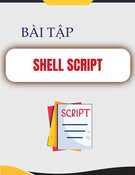




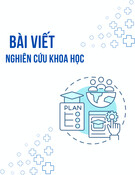



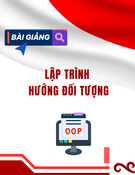






![Hệ thống quản lý cửa hàng bán thức ăn nhanh: Bài tập lớn [chuẩn nhất]](https://cdn.tailieu.vn/images/document/thumbnail/2025/20251112/nguyenhuan6724@gmail.com/135x160/54361762936114.jpg)
![Bộ câu hỏi trắc nghiệm Nhập môn Công nghệ phần mềm [mới nhất]](https://cdn.tailieu.vn/images/document/thumbnail/2025/20251111/nguyenhoangkhang07207@gmail.com/135x160/20831762916734.jpg)



